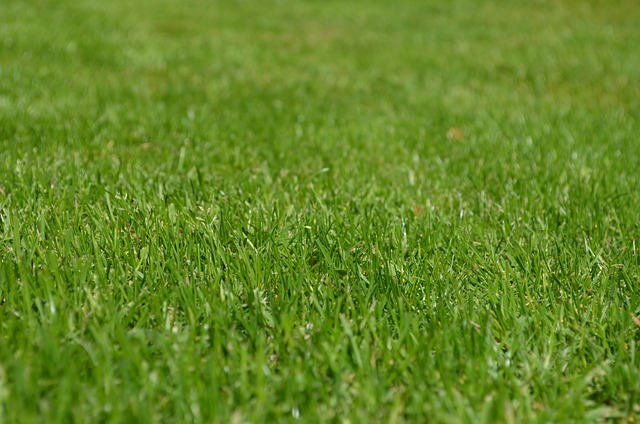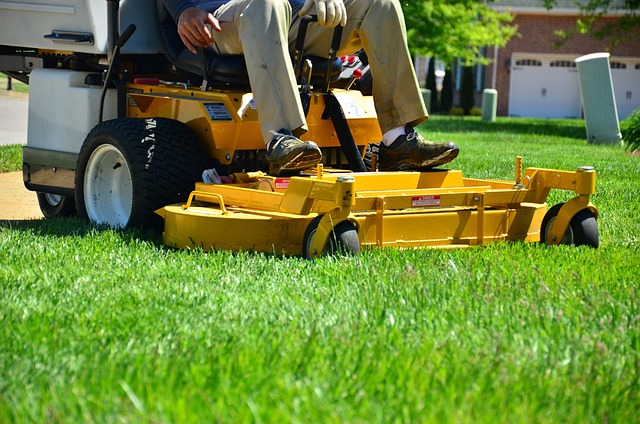Mulching and edging are vital practices in Lawn Care and Landscaping. Mulch improves soil health, preserves moisture, suppresses weeds, and enhances aesthetics. Edging defines lawn boundaries, prevents grass from encroaching, and controls weeds. Correct tools, like mulch spreaders and versatile string trimmers, ensure efficient application and precise cutting. These practices not only beautify outdoor spaces but also simplify maintenance, leading to a well-manicured and healthy lawn.
Transform your lawn into a picture-perfect expanse with the simple yet powerful practices of mulching and edging. This comprehensive guide delves into the art and science of these lawn care techniques, revealing their profound benefits for both lawn health and aesthetic appeal. From understanding the various types of mulch to mastering precise edging techniques, you’ll discover professional tips for achieving a neat, vibrant, and flourishing lawn. Elevate your landscaping game with these essential lawn care practices.
- Understanding Mulching: Benefits and Types for Lawn Health
- Edging Techniques: Enhancing the Look of Your Lawn
- The Right Tools for Effective Mulching and Edging
- Tips for Maintaining a Neat and Healthy Lawn through Regular Practices
Understanding Mulching: Benefits and Types for Lawn Health

Mulching is a fundamental practice in lawn care and landscaping that offers numerous advantages for maintaining healthy grass and overall garden aesthetics. It involves placing organic or inorganic materials on top of the soil to conserve moisture, suppress weeds, and enhance soil fertility. By understanding the benefits and exploring different mulching types, homeowners can significantly improve their lawn’s appearance and health.
One of the primary advantages is moisture retention, which is crucial for lawn care. A layer of mulch acts as a protective barrier, reducing evaporation and minimizing water loss from the soil. This is especially beneficial during dry spells, ensuring your lawn stays hydrated. Additionally, mulching helps suppress weed growth by blocking sunlight, preventing their seeds from germinating. With regular maintenance, it can transform an overgrown, weedy area into a lush, well-manicured lawn. Different types of mulch, such as wood chips, straw, or rock, offer varying levels of insulation, nutrient retention, and aesthetic appeal, catering to diverse landscaping needs and preferences in lawn care and gardening.
Edging Techniques: Enhancing the Look of Your Lawn

When it comes to lawn care and landscaping, edging is an often-overlooked but crucial aspect that can dramatically enhance your yard’s overall look and appeal. It involves defining the border between your grass and pathways, flower beds, or other plants, providing a clean, polished finish. There are various techniques to choose from, each offering unique advantages. One popular method is using handheld edge trimmers, which allow for precise control and are ideal for tight spaces and intricate designs. These tools enable you to trim alongside sidewalks, patios, and garden borders, creating sharp lines that make your lawn appear meticulously maintained.
For larger areas, investing in a string trimmer with an edging attachment can be a game-changer. This versatile tool allows you to cut grass edges while also trimming fences, hedges, and other obstacles. By incorporating these edging techniques into your regular lawn care routine, you not only improve the aesthetic value of your property but also make it easier to maintain. A well-edged lawn gives the appearance of professional landscaping, ensuring your outdoor space becomes the envy of the neighborhood.
The Right Tools for Effective Mulching and Edging

The right tools are essential for effective lawn care and landscaping, particularly when it comes to mulching and edging. For mulching, a high-quality mulch spreader is a must-have. These machines efficiently distribute mulch across your lawn, ensuring even coverage and minimizing waste. Look for models with adjustable settings to control the amount of mulch applied, catering to different grass types and seasonal needs.
When it comes to edging, a sharp and versatile string trimmer or edger is indispensable. These tools allow for precise cutting along walkways and around obstacles, defining your lawn’s edges flawlessly. Some models even feature extendable reach and adjustable heads, making them suitable for various landscaping tasks. Investing in the right tools will significantly enhance your lawn care routine, resulting in a well-manicured and visually appealing outdoor space.
Tips for Maintaining a Neat and Healthy Lawn through Regular Practices

Regular lawn care and landscaping practices are key to maintaining a neat and healthy lawn. Mulching, for instance, offers numerous benefits beyond aesthetics. By retaining moisture, suppressing weeds, and providing essential nutrients as it decomposes, mulch enriches the soil and promotes root growth. Choose organic mulch options like wood chips or straw for a natural approach that also supports biodiversity in your yard.
Edging is another vital task. It not only defines the boundaries of your lawn against sidewalks, driveways, and flower beds, but also prevents grass from encroaching on these areas. Regularly trimming edges with a string trimmer or edger ensures a clean, polished look. This practice also helps to control weeds by preventing them from taking root in these transitional zones, thereby streamlining overall lawn care and landscaping efforts.
Mulching and edging are essential practices in lawn care and landscaping, offering both aesthetic and functional benefits. By understanding the various types of mulch and effective edging techniques, you can enhance your lawn’s health and appearance. Regular application of these methods not only ensures a neat and clean look but also promotes a vibrant, lush garden. Embrace these simple yet powerful tools to transform your outdoor space into a well-maintained oasis.



